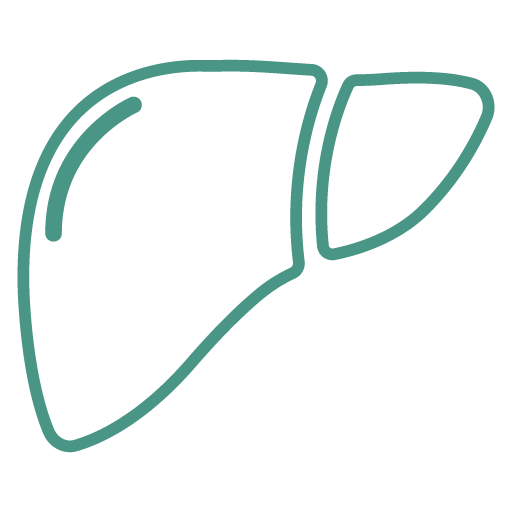LnRiLWZpZWxke21hcmdpbi1ib3R0b206MC43NmVtfS50Yi1maWVsZC0tbGVmdHt0ZXh0LWFsaWduOmxlZnR9LnRiLWZpZWxkLS1jZW50ZXJ7dGV4dC1hbGlnbjpjZW50ZXJ9LnRiLWZpZWxkLS1yaWdodHt0ZXh0LWFsaWduOnJpZ2h0fS50Yi1maWVsZF9fc2t5cGVfcHJldmlld3twYWRkaW5nOjEwcHggMjBweDtib3JkZXItcmFkaXVzOjNweDtjb2xvcjojZmZmO2JhY2tncm91bmQ6IzAwYWZlZTtkaXNwbGF5OmlubGluZS1ibG9ja311bC5nbGlkZV9fc2xpZGVze21hcmdpbjowfQ==
LnRiLWhlYWRpbmcuaGFzLWJhY2tncm91bmR7cGFkZGluZzowfQ==
LnRiLWdyaWQsLnRiLWdyaWQ+LmJsb2NrLWVkaXRvci1pbm5lci1ibG9ja3M+LmJsb2NrLWVkaXRvci1ibG9jay1saXN0X19sYXlvdXR7ZGlzcGxheTpncmlkO2dyaWQtcm93LWdhcDoyNXB4O2dyaWQtY29sdW1uLWdhcDoyNXB4fS50Yi1ncmlkLWl0ZW17YmFja2dyb3VuZDojZDM4YTAzO3BhZGRpbmc6MzBweH0udGItZ3JpZC1jb2x1bW57ZmxleC13cmFwOndyYXB9LnRiLWdyaWQtY29sdW1uPip7d2lkdGg6MTAwJX0udGItZ3JpZC1jb2x1bW4udGItZ3JpZC1hbGlnbi10b3B7d2lkdGg6MTAwJTtkaXNwbGF5OmZsZXg7YWxpZ24tY29udGVudDpmbGV4LXN0YXJ0fS50Yi1ncmlkLWNvbHVtbi50Yi1ncmlkLWFsaWduLWNlbnRlcnt3aWR0aDoxMDAlO2Rpc3BsYXk6ZmxleDthbGlnbi1jb250ZW50OmNlbnRlcn0udGItZ3JpZC1jb2x1bW4udGItZ3JpZC1hbGlnbi1ib3R0b217d2lkdGg6MTAwJTtkaXNwbGF5OmZsZXg7YWxpZ24tY29udGVudDpmbGV4LWVuZH0gLndwdi12aWV3LW91dHB1dFtkYXRhLXRvb2xzZXQtdmlld3Mtdmlldy1lZGl0b3I9ImVhNmQ5ZGExZjgxYjVkNjkzMmUzM2ZjM2FkNDJiZmQyIl0gPiAudGItZ3JpZC1jb2x1bW46bnRoLW9mLXR5cGUoMm4gKyAxKSB7IGdyaWQtY29sdW1uOiAxIH0gLndwdi12aWV3LW91dHB1dFtkYXRhLXRvb2xzZXQtdmlld3Mtdmlldy1lZGl0b3I9ImVhNmQ5ZGExZjgxYjVkNjkzMmUzM2ZjM2FkNDJiZmQyIl0gPiAudGItZ3JpZC1jb2x1bW46bnRoLW9mLXR5cGUoMm4gKyAyKSB7IGdyaWQtY29sdW1uOiAyIH0gLndwdi12aWV3LW91dHB1dFtkYXRhLXRvb2xzZXQtdmlld3Mtdmlldy1lZGl0b3I9ImVhNmQ5ZGExZjgxYjVkNjkzMmUzM2ZjM2FkNDJiZmQyIl0gLmpzLXdwdi1sb29wLXdyYXBwZXIgPiAudGItZ3JpZCB7IGdyaWQtdGVtcGxhdGUtY29sdW1uczogbWlubWF4KDAsIDAuNWZyKSBtaW5tYXgoMCwgMC41ZnIpO2dyaWQtY29sdW1uLWdhcDogNDBweDtncmlkLXJvdy1nYXA6IDQwcHg7Z3JpZC1hdXRvLWZsb3c6IHJvdyB9IC53cHYtdmlldy1vdXRwdXRbZGF0YS10b29sc2V0LXZpZXdzLXZpZXctZWRpdG9yPSJlYTZkOWRhMWY4MWI1ZDY5MzJlMzNmYzNhZDQyYmZkMiJdIC50Yi1tYXNvbnJ5IHsgZ3JpZC10ZW1wbGF0ZS1jb2x1bW5zOiBtaW5tYXgoMCwgMWZyKSBtaW5tYXgoMCwgMWZyKTtncmlkLWNvbHVtbi1nYXA6IDM1cHg7IH0gLndwdi12aWV3LW91dHB1dFtkYXRhLXRvb2xzZXQtdmlld3Mtdmlldy1lZGl0b3I9ImVhNmQ5ZGExZjgxYjVkNjkzMmUzM2ZjM2FkNDJiZmQyIl0gLnRiLW1hc29ucnkgLnRiLWJyaWNrX19jb250ZW50IHsgcGFkZGluZzogMCAwIDM1cHggMDsgfSAgIEBtZWRpYSBvbmx5IHNjcmVlbiBhbmQgKG1heC13aWR0aDogNzgxcHgpIHsgLnRiLWdyaWQsLnRiLWdyaWQ+LmJsb2NrLWVkaXRvci1pbm5lci1ibG9ja3M+LmJsb2NrLWVkaXRvci1ibG9jay1saXN0X19sYXlvdXR7ZGlzcGxheTpncmlkO2dyaWQtcm93LWdhcDoyNXB4O2dyaWQtY29sdW1uLWdhcDoyNXB4fS50Yi1ncmlkLWl0ZW17YmFja2dyb3VuZDojZDM4YTAzO3BhZGRpbmc6MzBweH0udGItZ3JpZC1jb2x1bW57ZmxleC13cmFwOndyYXB9LnRiLWdyaWQtY29sdW1uPip7d2lkdGg6MTAwJX0udGItZ3JpZC1jb2x1bW4udGItZ3JpZC1hbGlnbi10b3B7d2lkdGg6MTAwJTtkaXNwbGF5OmZsZXg7YWxpZ24tY29udGVudDpmbGV4LXN0YXJ0fS50Yi1ncmlkLWNvbHVtbi50Yi1ncmlkLWFsaWduLWNlbnRlcnt3aWR0aDoxMDAlO2Rpc3BsYXk6ZmxleDthbGlnbi1jb250ZW50OmNlbnRlcn0udGItZ3JpZC1jb2x1bW4udGItZ3JpZC1hbGlnbi1ib3R0b217d2lkdGg6MTAwJTtkaXNwbGF5OmZsZXg7YWxpZ24tY29udGVudDpmbGV4LWVuZH0gLndwdi12aWV3LW91dHB1dFtkYXRhLXRvb2xzZXQtdmlld3Mtdmlldy1lZGl0b3I9ImVhNmQ5ZGExZjgxYjVkNjkzMmUzM2ZjM2FkNDJiZmQyIl0gPiAudGItZ3JpZC1jb2x1bW46bnRoLW9mLXR5cGUoMm4gKyAxKSB7IGdyaWQtY29sdW1uOiAxIH0gLndwdi12aWV3LW91dHB1dFtkYXRhLXRvb2xzZXQtdmlld3Mtdmlldy1lZGl0b3I9ImVhNmQ5ZGExZjgxYjVkNjkzMmUzM2ZjM2FkNDJiZmQyIl0gPiAudGItZ3JpZC1jb2x1bW46bnRoLW9mLXR5cGUoMm4gKyAyKSB7IGdyaWQtY29sdW1uOiAyIH0gLndwdi12aWV3LW91dHB1dFtkYXRhLXRvb2xzZXQtdmlld3Mtdmlldy1lZGl0b3I9ImVhNmQ5ZGExZjgxYjVkNjkzMmUzM2ZjM2FkNDJiZmQyIl0gLmpzLXdwdi1sb29wLXdyYXBwZXIgPiAudGItZ3JpZCB7IGdyaWQtdGVtcGxhdGUtY29sdW1uczogbWlubWF4KDAsIDAuNWZyKSBtaW5tYXgoMCwgMC41ZnIpO2dyaWQtYXV0by1mbG93OiByb3cgfSAud3B2LXZpZXctb3V0cHV0W2RhdGEtdG9vbHNldC12aWV3cy12aWV3LWVkaXRvcj0iZWE2ZDlkYTFmODFiNWQ2OTMyZTMzZmMzYWQ0MmJmZDIiXSAudGItbWFzb25yeSB7IGdyaWQtdGVtcGxhdGUtY29sdW1uczogbWlubWF4KDAsIDFmcikgbWlubWF4KDAsIDFmcik7Z3JpZC1jb2x1bW4tZ2FwOiAzNXB4OyB9IC53cHYtdmlldy1vdXRwdXRbZGF0YS10b29sc2V0LXZpZXdzLXZpZXctZWRpdG9yPSJlYTZkOWRhMWY4MWI1ZDY5MzJlMzNmYzNhZDQyYmZkMiJdIC50Yi1tYXNvbnJ5IC50Yi1icmlja19fY29udGVudCB7IHBhZGRpbmc6IDAgMCAzNXB4IDA7IH0gICAgfSBAbWVkaWEgb25seSBzY3JlZW4gYW5kIChtYXgtd2lkdGg6IDU5OXB4KSB7IC50Yi1ncmlkLC50Yi1ncmlkPi5ibG9jay1lZGl0b3ItaW5uZXItYmxvY2tzPi5ibG9jay1lZGl0b3ItYmxvY2stbGlzdF9fbGF5b3V0e2Rpc3BsYXk6Z3JpZDtncmlkLXJvdy1nYXA6MjVweDtncmlkLWNvbHVtbi1nYXA6MjVweH0udGItZ3JpZC1pdGVte2JhY2tncm91bmQ6I2QzOGEwMztwYWRkaW5nOjMwcHh9LnRiLWdyaWQtY29sdW1ue2ZsZXgtd3JhcDp3cmFwfS50Yi1ncmlkLWNvbHVtbj4qe3dpZHRoOjEwMCV9LnRiLWdyaWQtY29sdW1uLnRiLWdyaWQtYWxpZ24tdG9we3dpZHRoOjEwMCU7ZGlzcGxheTpmbGV4O2FsaWduLWNvbnRlbnQ6ZmxleC1zdGFydH0udGItZ3JpZC1jb2x1bW4udGItZ3JpZC1hbGlnbi1jZW50ZXJ7d2lkdGg6MTAwJTtkaXNwbGF5OmZsZXg7YWxpZ24tY29udGVudDpjZW50ZXJ9LnRiLWdyaWQtY29sdW1uLnRiLWdyaWQtYWxpZ24tYm90dG9te3dpZHRoOjEwMCU7ZGlzcGxheTpmbGV4O2FsaWduLWNvbnRlbnQ6ZmxleC1lbmR9IC53cHYtdmlldy1vdXRwdXRbZGF0YS10b29sc2V0LXZpZXdzLXZpZXctZWRpdG9yPSJlYTZkOWRhMWY4MWI1ZDY5MzJlMzNmYzNhZDQyYmZkMiJdICA+IC50Yi1ncmlkLWNvbHVtbjpudGgtb2YtdHlwZSgxbisxKSB7IGdyaWQtY29sdW1uOiAxIH0gLndwdi12aWV3LW91dHB1dFtkYXRhLXRvb2xzZXQtdmlld3Mtdmlldy1lZGl0b3I9ImVhNmQ5ZGExZjgxYjVkNjkzMmUzM2ZjM2FkNDJiZmQyIl0gLmpzLXdwdi1sb29wLXdyYXBwZXIgPiAudGItZ3JpZCB7IGdyaWQtdGVtcGxhdGUtY29sdW1uczogbWlubWF4KDAsIDFmcik7Z3JpZC1hdXRvLWZsb3c6IHJvdyB9IC53cHYtdmlldy1vdXRwdXRbZGF0YS10b29sc2V0LXZpZXdzLXZpZXctZWRpdG9yPSJlYTZkOWRhMWY4MWI1ZDY5MzJlMzNmYzNhZDQyYmZkMiJdIC50Yi1tYXNvbnJ5IHsgZ3JpZC10ZW1wbGF0ZS1jb2x1bW5zOiBtaW5tYXgoMCwgMWZyKSBtaW5tYXgoMCwgMWZyKTtncmlkLWNvbHVtbi1nYXA6IDM1cHg7IH0gLndwdi12aWV3LW91dHB1dFtkYXRhLXRvb2xzZXQtdmlld3Mtdmlldy1lZGl0b3I9ImVhNmQ5ZGExZjgxYjVkNjkzMmUzM2ZjM2FkNDJiZmQyIl0gLnRiLW1hc29ucnkgLnRiLWJyaWNrX19jb250ZW50IHsgcGFkZGluZzogMCAwIDM1cHggMDsgfSAgICB9IA==
SPECIALIST EAR, NOSE AND THROAT ASSESSMENT
This assessment includes a specialized medical examination that evaluates the head and neck and the visceral organs in the region. The ear, nose and throat specialist evaluates four important sensory functions: hearing, balance, smell and taste. The assessment generally includes anterior rhinoscopy, otoscopy, inspection of the mouth and pharynx, indirect laryngoscopy and inspection of the neck. The ear, nose and throat specialist sees patients of all ages; children often have head and neck disorders.
DIAGNOSTIC EXAMINATIONS
- Nasal endoscopy: this examination can be performed with a small rigid or flexible optic (2.4-2.7 mm diameter) connected to a high-definition camera and enables very thorough inspection of the internal part of the nasal cavities and the nasopharynx.
- It can be used to determine the presence of septal deviations, anomalies of the turbinates, acute and chronic sinusitis, nasal polyposis, adenoidal hypertrophy, Eustachian tube disorders and growths in the nasal cavities and nasopharynx.
- Videolaryngofibroscopy: this is an examination of the upper airways in which a flexible fibroscope, connected to a high definition camera, is introduced into a nostril and passed through the nasopharynx (the posterior part of the nose) until the larynx and all its components can be seen. It can be used to inspect both the shape and the function (e.g., motility of the vocal cords) of the upper airways.
- Laryngo-stroboscopy: this is performed with the laryngoscope connected to a stroboscopic light source. It can be used, thanks to a technical trick, to watch the movements of the vocal cords in slow motion and facilitates the identification of the abnormal conditions that cause dysphonia (speech disorders).
- Otomicroscopy and diagnostic oto-endoscopy: using a very small scope or thin rigid optics the tympanic membrane and external auditory canal can be inspected at high magnification, allowing the detection of perforations or sclerosis of the tympanic membrane, cholesteatomas, or other abnomalities of the ear.
- Audiometric examination – audiometric speech evaluation: this assesses the patient’s hearing threshold and ability to understand speech.
- Impedance test: this evaluates, directly or indirectly, the state of the tympanic membrane, the function of the Eustachian tubes, and the integrity of the chain of small bones (hammer, anvil and stirrup) in the middle ear.
HEARING AID SERVICE FOR PEOPLE WITH IMPAIRED HEARING
Patients coming to the Clinic because of hearing problems will find excellent rehabilitation. There is a highly qualified hearing aid specialist who can ensure a complete service from the choice, application and adaptation of digital hearing aids, to advice regarding their adjustment, and to maintenance of any type of aid.
NASAL DISORDERS AND ALLERGY SERVICE - NOSE CENTER
Thanks to innovative diagnostic techniques (nasal cytology, prick tests and active anterior rhinomanometry) all types of nasal disorder (allergic and non-allergic) can be studied in depth and specific treatment arranged for each type of problem.
- Nasal cytology: this is an examination that studies the cells in the nose so that a specific diagnosis of the main forms of allergic and non-allergic rhinitis can be reached. A smear of cells that detach from the outermost part of the nasal fossa (inferior turbinate) is made, then stained and studied under an optical microscope at high magnification. It is a painless, non-invasive examination that can be performed on any type of patient, even children.
- Active anterior rhinomanometry: this is used to study nasal function by evaluating the airflow and nasal resistance with objective parameters. It is a non-invasive, painless examination and is carried out by letting the patient breathe inside a mask connected to the rhinomanomenter. The examination is performed under basal conditions and after nasal decongestion so that effects of anatomical obstruction can be differentiated from the effects of any inflammation. It is useful in the preoperative diagnosis of all patients who are being prepared to undergo nasal operations (endoscopic surgery, septoplasty, rhinoplasty …) and in the postoperative evaluation.
- Prick tests: these are skin tests for inhaled allergens, enabling the diagnosis of the most common types of allergic rhinitis.
OBSTRUCTIVE SLEEP APNEA SYNDROME (OSAS) CLINIC
Nocturnal snoring is a problem that, in recent years, is receiving ever increasing attention from doctors and the media. In addition to the simple, “aesthetic” component of snoring, the condition can be associated with a much more serious problem for the affected person’s health, i.e., sleep apnea. The occurrence of a high number of episodes of apnea can also cause important pathological conditions such as significant daytime drowsiness, arterial hypertension and pulmonary hypertension.
The specialist assessment includes:
- Inspection of the oral cavity and anterior rhinoscopy: this is done to determine the patency of these anatomical structures and identify any possible causes of obstruction (enlarged tonsils, lengthening of the soft palate and uvula, hypertrophy of the inferior turbinates, septal deviation …)
- Fibrolaryngoscopy with Muller’s maneuver: using a flexible endoscope, the upper airways (nasal fossa, nasopharynx, pharynx, laryngopharynx, larynx) are explored, looking for any causes of obstruction. Thanks to Muller’s maneuver (forced inspiration with the mouth and nose closed) a dynamic evaluation can be made of the degree of laxity of the pharyngeal and lingual muscles, thus partly reproducing what occurs during an episode of apnea.
The results of the outpatient evaluations indicate whether more in-depth sleep studies are required, such as sleep endoscopy, in which sleep is artificially induced, completely simulating the situations that develop during spontaneous sleep. This second-level diagnostic investigation is performed in the operating theater.
FUNCTIONAL COSMETIC SURGERY CLINIC
The ear, nose and throat specialist is often asked to correct cosmetic deformities of the nose, in addition to anatomical abnormalities. In this case the patient is offered a reconstruction plan that gives an idea, starting from photographs of the patient, of what surgery can achieve. Malformations of the ears also occur, the most frequent being prominent ears, commonly called “bat’s ears”. Through careful assessment and, when necessary, diagnostic investigations and digital reconstructions, we are now able to deal with these problems, respecting the “physiology”, and without distorting the individual’s natural features.
MULTIDISCIPLINARY CLINIC FOR THE DIAGNOSIS OF ORAL AND UPPER AIRWAY/DIGESTIVE TRACT DISORDERS
The clinic has special, innovative endoscopic equipment based on the possibility of using specific stains for the mucosa (NBI System) which is significantly more sensitive for detecting precancerous or frankly neoplastic lesions. The multidisciplinary team means that different areas of expertise are combined to obtain the best diagnostic and therapeutic approaches.
MAXILLOFACIAL SURGERY
The maxillofacial surgery unit guarantees services straddling classic otolaryngology, maxillofacial surgery and dentistry. It exploits the multidisciplinary approach and numerous different skills of the staff dedicated to this unit. The disorders most frequently managed are facial malformations and problems of mastication, indications for oral surgery, facial trauma, and sinusitis of dental origin.
LnRiLWdyaWQsLnRiLWdyaWQ+LmJsb2NrLWVkaXRvci1pbm5lci1ibG9ja3M+LmJsb2NrLWVkaXRvci1ibG9jay1saXN0X19sYXlvdXR7ZGlzcGxheTpncmlkO2dyaWQtcm93LWdhcDoyNXB4O2dyaWQtY29sdW1uLWdhcDoyNXB4fS50Yi1ncmlkLWl0ZW17YmFja2dyb3VuZDojZDM4YTAzO3BhZGRpbmc6MzBweH0udGItZ3JpZC1jb2x1bW57ZmxleC13cmFwOndyYXB9LnRiLWdyaWQtY29sdW1uPip7d2lkdGg6MTAwJX0udGItZ3JpZC1jb2x1bW4udGItZ3JpZC1hbGlnbi10b3B7d2lkdGg6MTAwJTtkaXNwbGF5OmZsZXg7YWxpZ24tY29udGVudDpmbGV4LXN0YXJ0fS50Yi1ncmlkLWNvbHVtbi50Yi1ncmlkLWFsaWduLWNlbnRlcnt3aWR0aDoxMDAlO2Rpc3BsYXk6ZmxleDthbGlnbi1jb250ZW50OmNlbnRlcn0udGItZ3JpZC1jb2x1bW4udGItZ3JpZC1hbGlnbi1ib3R0b217d2lkdGg6MTAwJTtkaXNwbGF5OmZsZXg7YWxpZ24tY29udGVudDpmbGV4LWVuZH0gLndwdi12aWV3LW91dHB1dFtkYXRhLXRvb2xzZXQtdmlld3Mtdmlldy1lZGl0b3I9IjE4MDEzMWMwNGUxNTRmNTZhNTI1MmJmZjkyMjUwMjhiIl0gPiAudGItZ3JpZC1jb2x1bW46bnRoLW9mLXR5cGUoM24gKyAxKSB7IGdyaWQtY29sdW1uOiAxIH0gLndwdi12aWV3LW91dHB1dFtkYXRhLXRvb2xzZXQtdmlld3Mtdmlldy1lZGl0b3I9IjE4MDEzMWMwNGUxNTRmNTZhNTI1MmJmZjkyMjUwMjhiIl0gPiAudGItZ3JpZC1jb2x1bW46bnRoLW9mLXR5cGUoM24gKyAyKSB7IGdyaWQtY29sdW1uOiAyIH0gLndwdi12aWV3LW91dHB1dFtkYXRhLXRvb2xzZXQtdmlld3Mtdmlldy1lZGl0b3I9IjE4MDEzMWMwNGUxNTRmNTZhNTI1MmJmZjkyMjUwMjhiIl0gPiAudGItZ3JpZC1jb2x1bW46bnRoLW9mLXR5cGUoM24gKyAzKSB7IGdyaWQtY29sdW1uOiAzIH0gLndwdi12aWV3LW91dHB1dFtkYXRhLXRvb2xzZXQtdmlld3Mtdmlldy1lZGl0b3I9IjE4MDEzMWMwNGUxNTRmNTZhNTI1MmJmZjkyMjUwMjhiIl0gLmpzLXdwdi1sb29wLXdyYXBwZXIgPiAudGItZ3JpZCB7IGdyaWQtdGVtcGxhdGUtY29sdW1uczogbWlubWF4KDAsIDAuMzMzMzMzMzMzMzMzMzNmcikgbWlubWF4KDAsIDAuMzMzMzMzMzMzMzMzMzNmcikgbWlubWF4KDAsIDAuMzMzMzMzMzMzMzMzMzNmcik7Z3JpZC1hdXRvLWZsb3c6IHJvdyB9IEBtZWRpYSBvbmx5IHNjcmVlbiBhbmQgKG1heC13aWR0aDogNzgxcHgpIHsgLnRiLWdyaWQsLnRiLWdyaWQ+LmJsb2NrLWVkaXRvci1pbm5lci1ibG9ja3M+LmJsb2NrLWVkaXRvci1ibG9jay1saXN0X19sYXlvdXR7ZGlzcGxheTpncmlkO2dyaWQtcm93LWdhcDoyNXB4O2dyaWQtY29sdW1uLWdhcDoyNXB4fS50Yi1ncmlkLWl0ZW17YmFja2dyb3VuZDojZDM4YTAzO3BhZGRpbmc6MzBweH0udGItZ3JpZC1jb2x1bW57ZmxleC13cmFwOndyYXB9LnRiLWdyaWQtY29sdW1uPip7d2lkdGg6MTAwJX0udGItZ3JpZC1jb2x1bW4udGItZ3JpZC1hbGlnbi10b3B7d2lkdGg6MTAwJTtkaXNwbGF5OmZsZXg7YWxpZ24tY29udGVudDpmbGV4LXN0YXJ0fS50Yi1ncmlkLWNvbHVtbi50Yi1ncmlkLWFsaWduLWNlbnRlcnt3aWR0aDoxMDAlO2Rpc3BsYXk6ZmxleDthbGlnbi1jb250ZW50OmNlbnRlcn0udGItZ3JpZC1jb2x1bW4udGItZ3JpZC1hbGlnbi1ib3R0b217d2lkdGg6MTAwJTtkaXNwbGF5OmZsZXg7YWxpZ24tY29udGVudDpmbGV4LWVuZH0gLndwdi12aWV3LW91dHB1dFtkYXRhLXRvb2xzZXQtdmlld3Mtdmlldy1lZGl0b3I9IjE4MDEzMWMwNGUxNTRmNTZhNTI1MmJmZjkyMjUwMjhiIl0gPiAudGItZ3JpZC1jb2x1bW46bnRoLW9mLXR5cGUoM24gKyAxKSB7IGdyaWQtY29sdW1uOiAxIH0gLndwdi12aWV3LW91dHB1dFtkYXRhLXRvb2xzZXQtdmlld3Mtdmlldy1lZGl0b3I9IjE4MDEzMWMwNGUxNTRmNTZhNTI1MmJmZjkyMjUwMjhiIl0gPiAudGItZ3JpZC1jb2x1bW46bnRoLW9mLXR5cGUoM24gKyAyKSB7IGdyaWQtY29sdW1uOiAyIH0gLndwdi12aWV3LW91dHB1dFtkYXRhLXRvb2xzZXQtdmlld3Mtdmlldy1lZGl0b3I9IjE4MDEzMWMwNGUxNTRmNTZhNTI1MmJmZjkyMjUwMjhiIl0gPiAudGItZ3JpZC1jb2x1bW46bnRoLW9mLXR5cGUoM24gKyAzKSB7IGdyaWQtY29sdW1uOiAzIH0gLndwdi12aWV3LW91dHB1dFtkYXRhLXRvb2xzZXQtdmlld3Mtdmlldy1lZGl0b3I9IjE4MDEzMWMwNGUxNTRmNTZhNTI1MmJmZjkyMjUwMjhiIl0gLmpzLXdwdi1sb29wLXdyYXBwZXIgPiAudGItZ3JpZCB7IGdyaWQtdGVtcGxhdGUtY29sdW1uczogbWlubWF4KDAsIDAuMzMzM2ZyKSBtaW5tYXgoMCwgMC4zMzMzZnIpIG1pbm1heCgwLCAwLjMzMzNmcik7Z3JpZC1hdXRvLWZsb3c6IHJvdyB9ICB9IEBtZWRpYSBvbmx5IHNjcmVlbiBhbmQgKG1heC13aWR0aDogNTk5cHgpIHsgLnRiLWdyaWQsLnRiLWdyaWQ+LmJsb2NrLWVkaXRvci1pbm5lci1ibG9ja3M+LmJsb2NrLWVkaXRvci1ibG9jay1saXN0X19sYXlvdXR7ZGlzcGxheTpncmlkO2dyaWQtcm93LWdhcDoyNXB4O2dyaWQtY29sdW1uLWdhcDoyNXB4fS50Yi1ncmlkLWl0ZW17YmFja2dyb3VuZDojZDM4YTAzO3BhZGRpbmc6MzBweH0udGItZ3JpZC1jb2x1bW57ZmxleC13cmFwOndyYXB9LnRiLWdyaWQtY29sdW1uPip7d2lkdGg6MTAwJX0udGItZ3JpZC1jb2x1bW4udGItZ3JpZC1hbGlnbi10b3B7d2lkdGg6MTAwJTtkaXNwbGF5OmZsZXg7YWxpZ24tY29udGVudDpmbGV4LXN0YXJ0fS50Yi1ncmlkLWNvbHVtbi50Yi1ncmlkLWFsaWduLWNlbnRlcnt3aWR0aDoxMDAlO2Rpc3BsYXk6ZmxleDthbGlnbi1jb250ZW50OmNlbnRlcn0udGItZ3JpZC1jb2x1bW4udGItZ3JpZC1hbGlnbi1ib3R0b217d2lkdGg6MTAwJTtkaXNwbGF5OmZsZXg7YWxpZ24tY29udGVudDpmbGV4LWVuZH0gLndwdi12aWV3LW91dHB1dFtkYXRhLXRvb2xzZXQtdmlld3Mtdmlldy1lZGl0b3I9IjE4MDEzMWMwNGUxNTRmNTZhNTI1MmJmZjkyMjUwMjhiIl0gID4gLnRiLWdyaWQtY29sdW1uOm50aC1vZi10eXBlKDFuKzEpIHsgZ3JpZC1jb2x1bW46IDEgfSAud3B2LXZpZXctb3V0cHV0W2RhdGEtdG9vbHNldC12aWV3cy12aWV3LWVkaXRvcj0iMTgwMTMxYzA0ZTE1NGY1NmE1MjUyYmZmOTIyNTAyOGIiXSAuanMtd3B2LWxvb3Atd3JhcHBlciA+IC50Yi1ncmlkIHsgZ3JpZC10ZW1wbGF0ZS1jb2x1bW5zOiBtaW5tYXgoMCwgMWZyKTtncmlkLWF1dG8tZmxvdzogcm93IH0gIH0g













